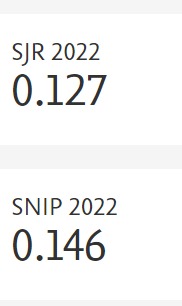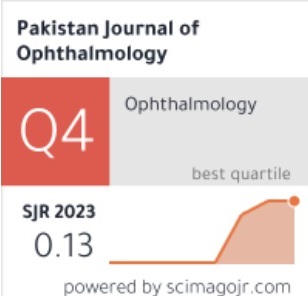Local Chemotherapy for Retinoblastoma
DOI:
https://doi.org/10.36351/pjo.v33i4.45Abstract
Introduction:
In childhood malignancies Retinoblastoma (Rb) is the most common intraocular malignancy.It is more common in children before three years of age. Retinoblastoma may be unilateral or bilateral, unilateral retinoblastoma is more common. It may be heritable or non-heritable. Retinoblastoma may present as endophytic or exophytic tumor .Diagnostic methods includes examination under anesthesia, indirect ophthalmoscopy,B scan,CT scan,MRI scan and retcam imaging remains the gold standards for diagnosis.Treatment of retinoblastoma is improving in its outcomes and there is lot of progress ,success in new treatment modalities ,those been very effective in saving the vision, salvage the globe and save the life.(1)The treatment options includes chemotherapy ,that can be intravenous chemotherapy,periocular chemotherapy,intravitreal chemotherapy and intra-arterial chemotherapy,and local modalities i.e. transpupillary thermotherapy, cryotherapy, laser photocoagulation, radiation treatment using plaque brachytherapy or EBRT. The most common intravenous chemotherapy drugs are carboplatin,vincristine,and etoposide.The drugs for periocular chemotherapy are Topotecan and carboplatin,for intravitreal chemotherapy most common used drugs are methotrexate,topotecan and melphalan, forintra-arterial chemotherapy drugs used are melphalan,topotecan and rarely carboplatin.The treatment options can be used as single treatment or in adjuvant to consolidate, depending upon the stage of disease. Advanced stages of disease and orbital involvement having poor prognosis.






